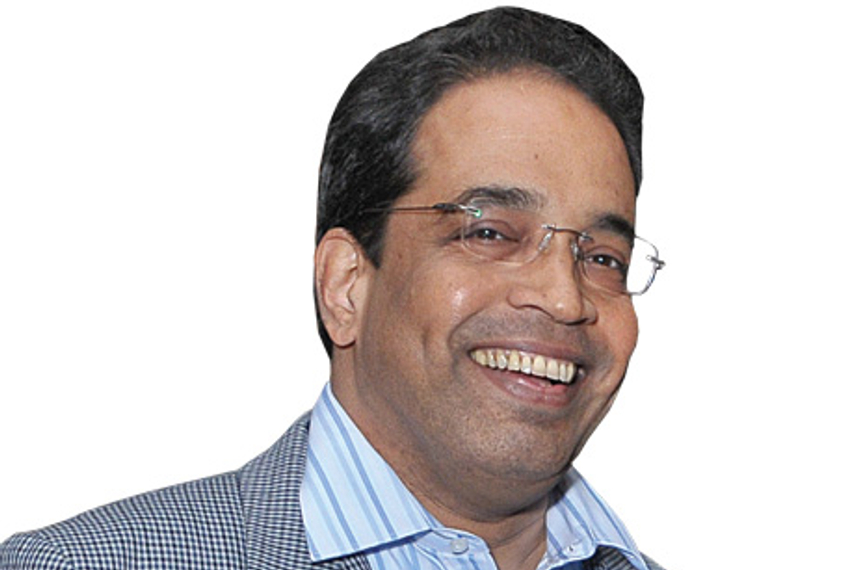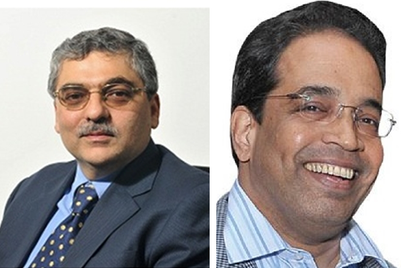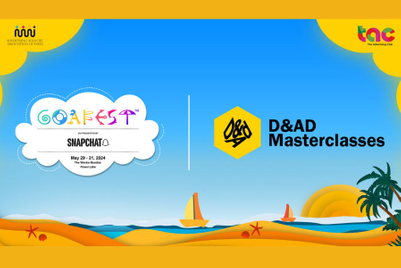
Let’s start with Goafest. The last two editions have seen several changes in the festival. How would you evaluate its evolution?
Two years ago, there were ramblings on the awards at Goafest; there was a call for greater transparency. Subsequently, there were threats to pull out. There were views that the partnership with the Abbys should not continue.
We primarily believed that the industry should not get split as multiple islands, but should work as one to further our interests, and celebrate as one. We worked towards ensuring that the partnership continued. Transparency was ensured through an auditor’s appointment, and much of the issues were resolved last year itself. In 2012, we saw further improvements, with participation from neighbouring countries like SriLanka and Pakistan. This year, we also saw around 70 young marketers (under 30 years) attend Goafest.
There has been constant improvisation to improve the equity of Goafest. We have now moved to a good place. This has been possible because of the right set of people who have taken up the responsibility to make sure this happened. The awards governing council was constituted in the right spirit of partnership with an Ad Club nominee in the chair. Every voice has been heard and decisions have been taken in the interest of the industry.
So the partnership is secure, and will continue from here on...?
Technically, the agreement was until March / April 2012. But we’ve gotten to a good place and should go further from here, and conversations are on to further the Goafest property and the awards within it.
Is Goafest as a property profitable, and has its brand value gone up – has there been an attempt to measure its value growth?
Yes, Goafest is profitable. It has been growing year on year.
We have not made an attempt to attach a value to the event, and as such that is difficult as it involves several intangibles. But on every tangible element that we can count, it has grown manifold in stature and size.
What could be done better at Goafest?
As I said, it’s constantly being improvised and improved upon. It is a celebration of not just creativity but also of knowledge, and we’ve had the best of speakers attend. Last year there was some feedback on one or two of the speakers, and we acted on it in 2012 and ensured it was addressed.
Starting 2011, we have seen ASCI using the Goafest platform to restate its objectives and reiterate the mandate for self-regulation and responsible advertising. We saw the Olive Crown Awards by the IAA being launched at Goafest 2011. Goafest has grown in equity, and become a platform for larger industry initiatives.
Speaking of self-regulation, there seems to be increasing desire of government to control content, including ads. What is your sense on this?
I believe that as a robust democracy, we already have so many acts governing this aspect, in one form or the other. For example: misrepresentation of women, sensitivity to religion and cultures, factuality of claims, misleading ads, etc. And there is a robust self-regulating mechanism too which the advertising world follows. We have ASCI (comprised of clients, ad agencies, media, consumer activists et al) doing a very good job. You have the apex industry associations like the AAAI and ISA and INS and IBF made up of respected entities in the ad, marketing and media world who subscribe to self regulation in letter and spirit and adhere to norms; exceptions if any are few and they do get addressed.
The problem is not about these corporate citizens not being responsible and sensitive to our diversity and milieu, but the stridency and unreasonableness of self-claimed protectors of public morality and interest groups to any content or ads, which end up having political overtones.
As a society, perhaps we have become hyper sensitive and lost all sense of humour. The recent furore over harmless cartoons is but an example of intemperateness and desire to beat the citizens with a baton at the slightest pretext. And we are a democracy priding ourselves on freedom of expression and action! Misplaced priorities in my humble view, rather than getting to a dharmarajya of yore, as a nation and people.
AAAI and ASCI have been speaking at various forums, including at government-sponsored meets, evangelising self regulation and explaining the process in place to address and stop ads of the wrong kind. Complaint councils have been set up by broadcast industry to proactively take corrective action and mitigate wrong content. There is enhanced pro-activism for self regulation.
On other industry associations: how have the relationships with industry bodies like INS and IBF evolved in the last two years?
We have been in constant dialogue with other industry bodies, and we fully recognise that we operate in an ecosystem and must work together for all of us to grow.
With the IBF, we had a joint agreement created some time back. Around two years ago, that agreement expired; we’ve drafted a new agreement taking into account the new realities of the market. Drafts have been exchanged and we expect it to be signed soon. That does not mean we have stopped working together. On the agenda are commercial issues, business practices, affirmation of contracts, how spots should be seen and analysed and how to grow the industry.
With the INS, we have revived the interaction on a formal basis, and the next meeting is due in July.
Our belief is that there should be a common forum comprising INS, IBF and AAAI, for us to be able to act together for the industry’s betterment – in a situation where a client reneges on commitments, working in unison will be far more effective.
How has the AAAI member base grown in the last two years? And what is the level of engagement with members?
We have to be very careful about taking members on board, because membership comes with benefits like automatic credit. Growing with due diligence, we have added 15 to 20 members in the last two years, taking the total to over 110.
Most of the significant agencies in the business are members – 80 to 85 per cent of the industry revenue is accounted for by AAAI members.
Every quarter, we have been communicating with all members on issues we need to tackle, and we have had meetings in different cities. Financial literacy and the importance of having a bottom-line focus is a topic that we have constantly discussed – that unless you make money, you cannot invest back into the business, invest in talent that can then grow the business.
What has been the level of liaison with the government, on issues like Service Tax?
On Service Tax, there was confusion as every circle adopted a different approach. We made a representation to the finance secretary and the issue was resolved in six months. It was becoming a problem because some of the authorities were claiming tax on the basis of notional income of 15 per cent, and not on the actual income.
What is your view on the TRAI notification restricting ads to 12 minutes in every clock hour?
Many countries do have such restrictions and we too have similar restrictions under the cable rules and regulations. It may be reasonable too in a context. But, the issue has to be seen holistically. Having one more regulator under telecom ministry, when broadcasting comes under I&B ministry will lead to multiplicity of oversight. Would it not be better to ensure that existing rules are implemented?
Secondly, should the government not ensure the much needed digitization that has been talked about for so long? Will this not ensure accurate reporting of subscriptions, which the broadcasters have been legitimately asking for? In the current scenario, in the absence of the above, it will only lead to fall in inventory and more pressure on pricing. Of course, over time, water will find its own level in a free market. No one can take viewers for granted with ad overload; you will only lose them to better channels. I see broadcasters having more challenges and having to balance between content and ads and get to a good commercial place.
AAAI has represented as such to TRAI and I&B and is in dialogue with other industry bodies on this issue.
Training and development – how would you rate developments on that front?
Honestly, that is one area where we started discussions but haven’t gone too far. It is definitely on the radar, and we’re trying to revive a few things. For example, we used to have a AAAI-led advertising program of 8 to 12 weeks a few years ago. Some of the senior people should be able to deliver lectures at important colleges. We need to bring back the equity for advertising, and there is a need to increase interactions with management institutes.
Pitch fees: Has it been discussed in the last two years?
It was discussed a couple of times. At a practical level, it is not possible for AAAI to issue a diktat. We are a voluntary industry association. And there will always be some smart agencies which do not ask for a pitch fee. There has also been advertiser feedback saying it should be left to the individual agencies.
We have communicated to members urging them not to participate in pitches that are more often called for to discover prices rather than the quality of the second agency. We are not here to throw away our ideas. We need to price our ideas.
Then there is the issue of pitch consultants. They invariably work for the clients, and their mandate is to reduce the price as much as possible. There is inherent conflict here, as the award of a business cannot be on the basis of price.
What does the overall business scenario hold for advertising?
The Indian economy hasn’t done too well from November 2011. It shows in a GDP growth of 5.3 per cent for the January to March 2012 quarter. This will have an impact on ad spends, marketing budgets and launches planned. It is a cycle that one has to weather.
My take is that 2013 is also going to be difficult. It’s time that agencies can make use of to put the house in order.
What would you term the high points of your two-year term?
I would say, pro-actively addressing member issues and engaging industry associations. The setting up of Broadcast Audience Research Council (BARC) was significant – comprising 60 per cent from IBF, and the rest equally between ISA (Indian Society of Advertisers) and AAAI. Reviving talks with the INS has to rank among the high points, and also the participation of other countries in Goafest.
How will life change for you post the AAAI presidency? More time for the agency, and for yourself?
My association with the AAAI will continue as its immediate past president. There were four or five members who called me and asked me to continue. I was of the view that there’s a certain decorum; it’s not about staying stuck to this chair. The association is a continuum and we must all chip in, in whatever capacity we hold.
This is an honorary responsibility, but an important one, and is an opportunity for us to give back to the industry. Running the association is a 24 x 7 responsibility. It’s a day / night job with too many things to handle; there are very many expectations of members that one needs to be sensitive to and respond swiftly to.
At the end of the day, I will be leaving satisfied that I had the opportunity to lead a team of exceptionally committed people on the AAAI committees. My job was only to provide an enabling environment for them to do their jobs.


.jpg&h=334&w=500&q=100&v=20250320&c=1)
.jpg&h=334&w=500&q=100&v=20250320&c=1)

.jpg&h=334&w=500&q=100&v=20250320&c=1)


.jpg&h=334&w=500&q=100&v=20250320&c=1)


.jpg&h=334&w=500&q=100&v=20250320&c=1)





.jpg&h=268&w=401&q=100&v=20250320&c=1)


